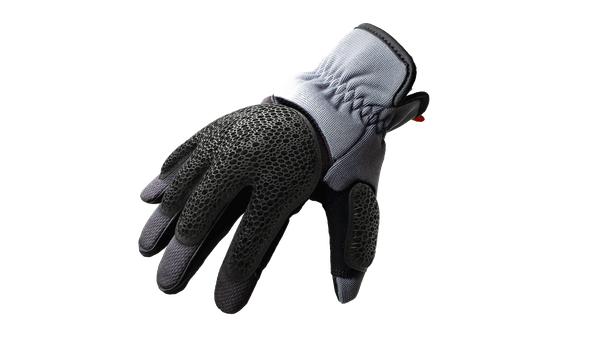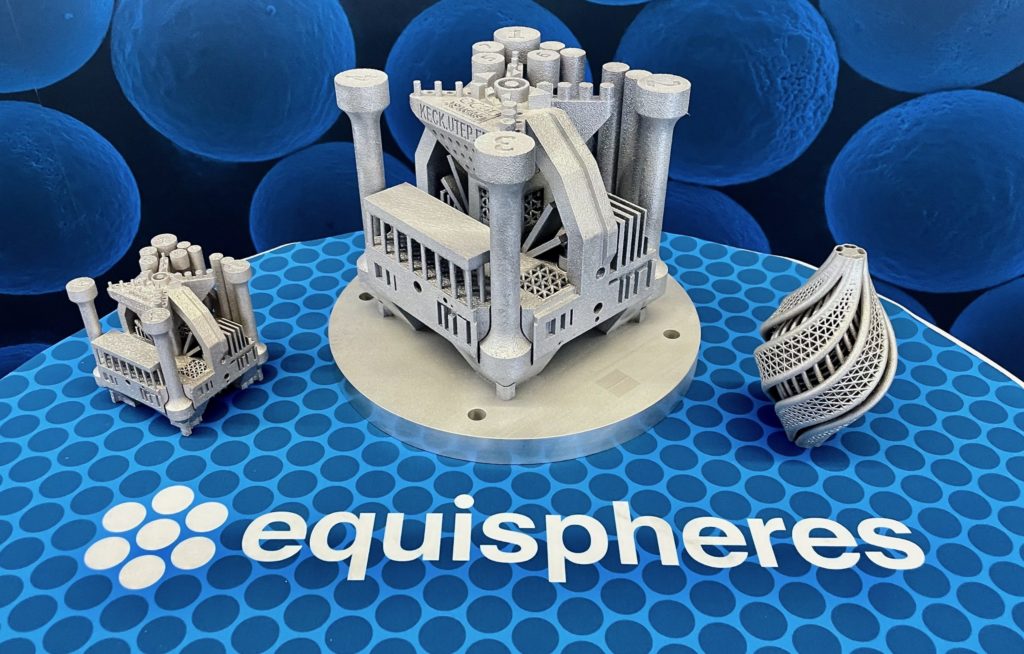While additive construction is being deployed at this very moment to aid in a military conflict between India and China, the additive manufacturing (AM) industry is focused on Germany. We’ll see how the numbers stack up after the event, but there’s a sense that Formnext 2022 is the largest trade show the AM industry has seen so far. To tackle all of the news out of the conference taking place in Frankfurt, Germany right now, we’ve publishing several roundups dedicated to 3D printing hardware, software, materials and more. In this post, we’ll provide a brief overview of the materials news that we haven’t gotten a chance to dedicate entire articles to.
Inkbit’s Titan Tough Epoxy 85
Inkjet 3D printing startup Inkbit has introduced a new material dubbed Titan Tough Epoxy 85, meant to exhibit production-grade mechanical properties. In particular, Inkbit claims that the photopolymer demonstrates high impact resistance and can withstand long-term UV exposure, issues faced by typical photopolymers in 3D printing. Inkbit is also showcasing its Vista 3D printer for the first time at Formnext.
Carbon’s EPU 43 and 45, Henkel Loctite IND147
Continuous digital light processing (DLP) pioneer Carbon is showcasing two new damping elastomers. The white EPU 43 is meant to be an energy-damping elastomer with durability under high-cycle flexing, which Carbon suggests is ideal for comfort padding for helmet liners and safety gloves. EPU 45 has even higher damping and printability, making it suitable for sports padding and seating. EPU 43 has already been used in product from Hard Head Veterans and CCM, while products featuring EPU 45 will be on the market shortly.
The company also announced the extension of its work with German chemical company Henkel, which has resulted in the release of Henkel Loctite IND147, a rigid, black resin with high stiffness, temperature resistance, dimensional stability, and surface quality. Henkel suggests that it is ideal for moldings, fixtures, and small parts that face high heat. Because it is a single-part resin, it doesn’t require heat treatment and, thus, is less expensive and labor-intensive than other resins for Carbon’s 3D printers.
EOS’s Climate Neutral PA 1101 and Carbon-reduced PA 2200
EOS has announced the release of two new nylon powders that are said to be less ecologically damaging. While Climate Neutral PA 1101 is a bio-based selective laser sintering (SLS) polymer developed with Arkema, PA 2200 CarbonReduced is said to have a CO2e footprint that is 45 percent less than the traditional PA 2200 counterpart, as it is made with renewable energy. Along with the new materials, EOS showcased its fine detail resolution (FDR) 3D printer, capable of layer thicknesses of 40 µm and minimum wall thickness of just 0.22 mm. FDR technology is available with the new FORMIGA P 110 FDR polymer system.
Trumpf Large Format Copper 3D Printing
Trumpf exhibited the ability to 3D print copper parts with its LPBF machines, including its largest system, the Tru-Print 5000. Thanks to the use of a green laser, the company claims that the traditionally difficult material is now as easy to print with as stainless steel. This has resulted in the release of the Tru-Print 5000 Green Edition 3D printer. Moreover, Trumpf claims that it is possible to perform hybrid production with the technology, meaning that users can 3D print features like cooling channels onto milled or cast items. It’s also possible to repair turbine blades. Typically, such hybrid manufacturing was more or less limited to directed energy deposition machines.
Roboze Bio-based PA
Roboze, an Italian manufacturer of high-temperature extrusion 3D printers, announced the release of a bio-based nylon material, reinforced with natural fibers. It has 60% lower CO2 emissions than a carbon fiber-reinforced petroleum-based PA. It has the added benefit that it absorbs less water from the air, thus ensuring stable Young’s modulus even in humid conditions. It is ideal for applications requiring tensile strength of less than 60 MPa.
Arkema Photopolymers and Thermoplastics
French chemical company Arkema unveiled new photopolymers at Formnext. These included N3D-HITEMP062, which is described as a “hybrid high temperature material with excellent toughness and high HDT properties.” N3D-CAST063 is said to be a high-resolution material with a matte finish, making it ideal for casting applications. Another unnamed elastomeric material was also exhibited. It has an elongation at break of 170% and tear strength of 33 kN/m.
In addition to the aforementioned PA1101, Arkema and EOS launched a new Kepstan PEKK powder for the EOS P 810 for electrical insulation and other high-temperature applications. With Stratasys and Kimya, Arkema also developed Kimya Kepstan PEKK-SC 3D for use on Stratasys extrusion machines.
With Continuous Composites, whom Arkema previously invested in, the French firm introduced PolyMat High Tg for printing of continuous carbon and glass fibers and CeraMat ™ Carbon/Carbon resin is for the creation of Carbon Bonded Carbon precursor parts for ultra-high temperature applications.
Non-explosible Aluminum from Equispheres
Ottawa, Ontario’s Equispheres Inc. showcased a non-explosible aluminum alloy feedstock LPBF. Dubbed NExP-1, the material is not only ideal for 3D printing aluminum parts with a high throughput, due to the quality of Equispheres powder, but for doing so without fear of explosion.
Subscribe to Our Email Newsletter
Stay up-to-date on all the latest news from the 3D printing industry and receive information and offers from third party vendors.
You May Also Like
3D Printing Financials: Fathom Struggles in Financial Quicksand During Critical Transition
Facing a year of key transitions and financial pressures, Fathom (Nasdaq: FTHM) has filed its annual report for 2023 with the U.S. Securities and Exchange Commission (SEC). The document outlines...
Latest Earnings Overview for Australian 3D Printing Firms Titomic and AML3D
Australian 3D printing manufacturing firms Titomic (ASX: TTT) and AML3D (ASX: AL3) reported their financial results for the period from July to December 2023, marking the first half of their...
3D Printing Webinar and Event Roundup: April 7, 2024
Webinars and events in the 3D printing industry are picking back up this week! Sea-Air-Space is coming to Maryland, and SAE International is sponsoring a 3D Systems webinar about 3D...
3D Printing Financials: Unpacking Farsoon and BLT’s 2023 Performance
In the Chinese 3D printing industry, two companies, Farsoon (SHA: 688433) and Bright Laser Technologies, or BLT (SHA: 688333), have recently unveiled their full-year earnings for 2023. Farsoon reported increases...




































